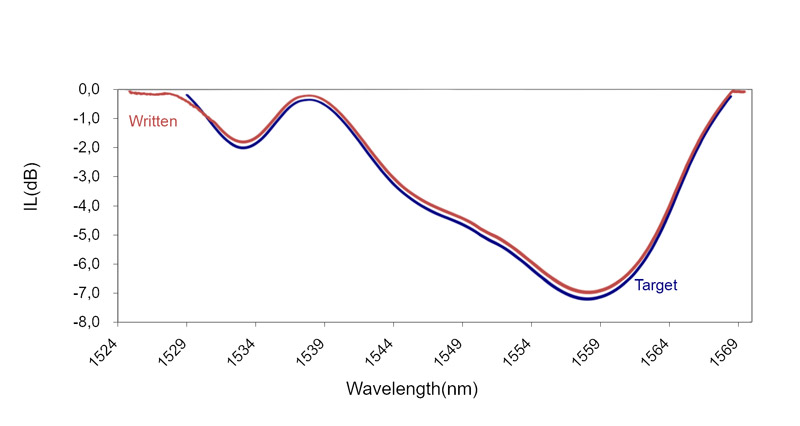We build FBGs used in undersea applications for more than 15 years
Stable process means stable product & stable results
Years of experience in making ultra-high reliability GFFs means that we apply this know-how and workmanship to all our FBG based products, for all applications.

FBG-based gain flattening filters (GFF)
ITF’s Gain Flattening Filters are designed to be used as gain equalizers
In C-band or L-band erbium doped fiber amplifiers (EDFA) or Raman amplifiers. ITF’s FBG-based GFFs feature low insertion loss, PDL and PMD. The fully controlled writing process allows to precisely match the customer’s target reflectivity spectrum in order to minimize error and ripple functions, which are maintained across the entire temperature range and through the end-of-life of the amplifier thanks to ITF’s High-Reliability athermal packaging qualified for undersea applications.
Features:
Low signal insertion loss
Low PDL and PMD values
Low random and systematic errors (group error function: Typical <0.1dB)
Athermal packaging
Proven reliability field data
Applications
- Gain normalization across the full EDFA window (1525 to 1615nm)
- Qualified for submarine optical networks
- Long Haul and Ultra Long Haul DWDM submerged system repeaters
Reliable filters for Long haul systems with proven athermal performance
ITF Technologies offers specialty Fiber Bragg Gratings for system manufacturers in the telecommunications market.
ITF’s Gain Flattening Filters are based on the Fiber Bragg Grating technology, which is the best solution among others for long haul and ultra-long haul systems. Indeed, each filter has a unique transmission curve, so there is no linear accumulation of error in a long cascade of amplifiers. Our high-reliability components and process meet the highest standards of the industry and the rigorous demands of undersea applications.
Here’s a figure showing what might be a typical requirement for a gain flattening pattern, and how close to the theoretical requirements we are able to write the FBG spectrum with our process.

